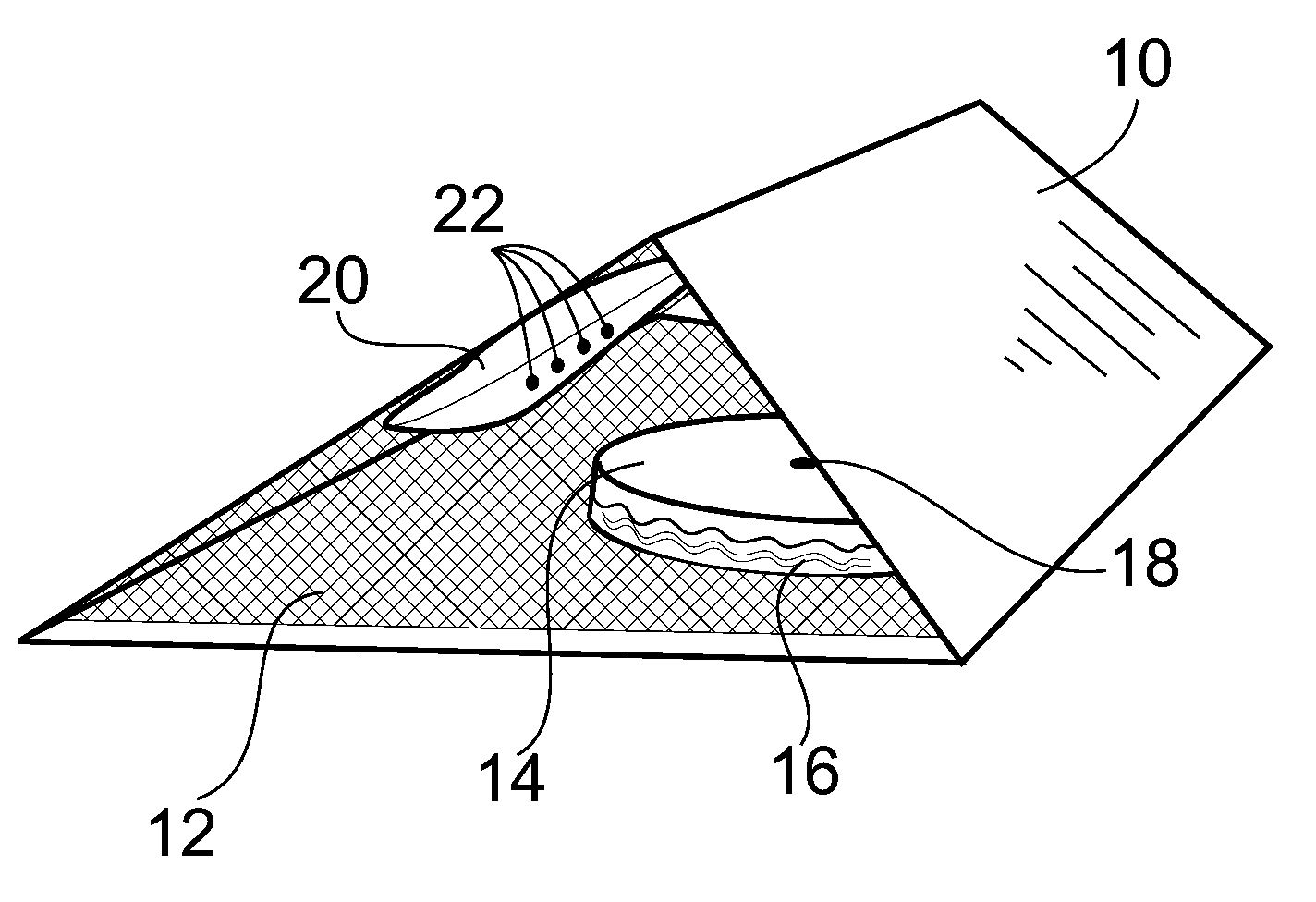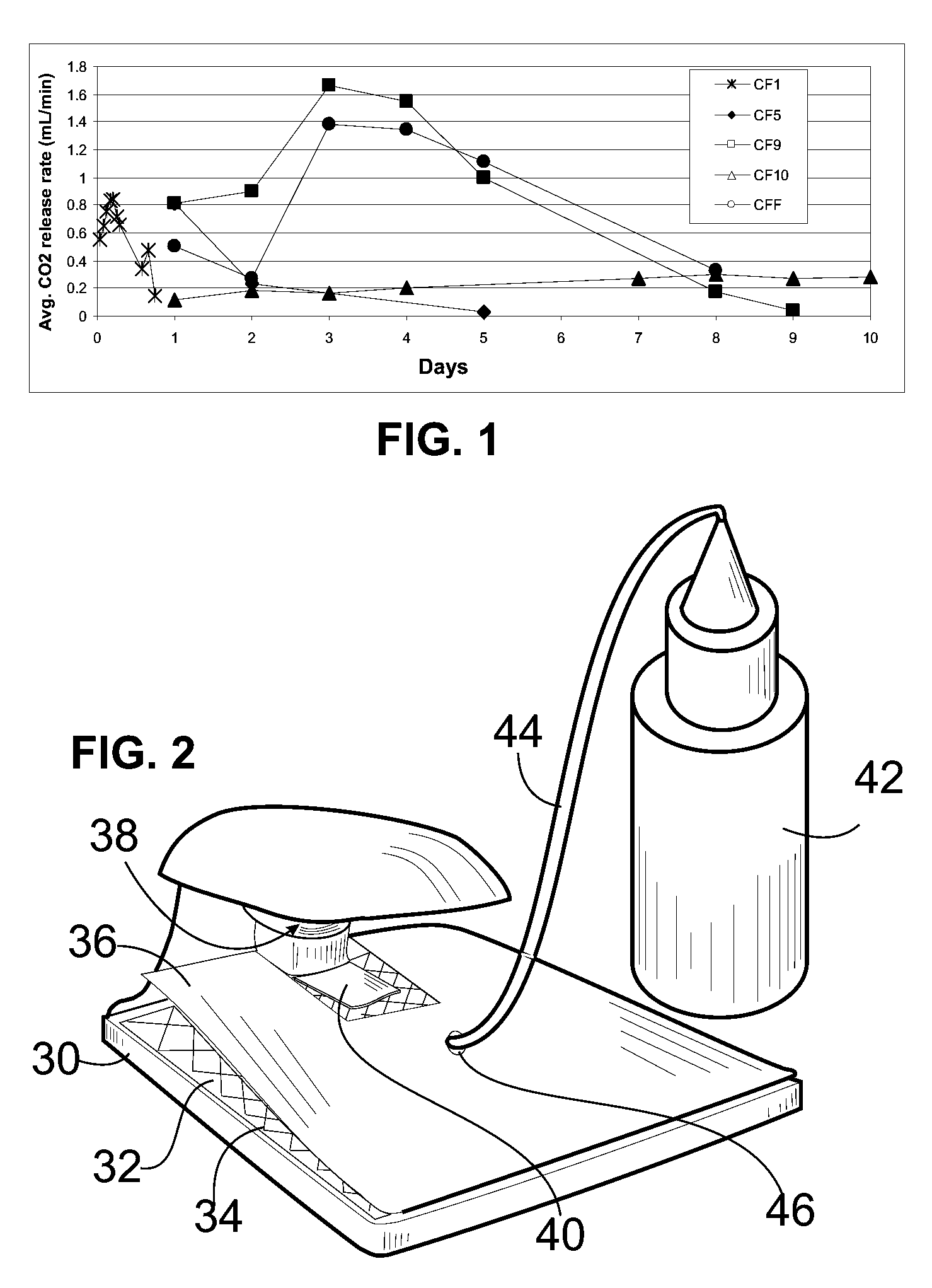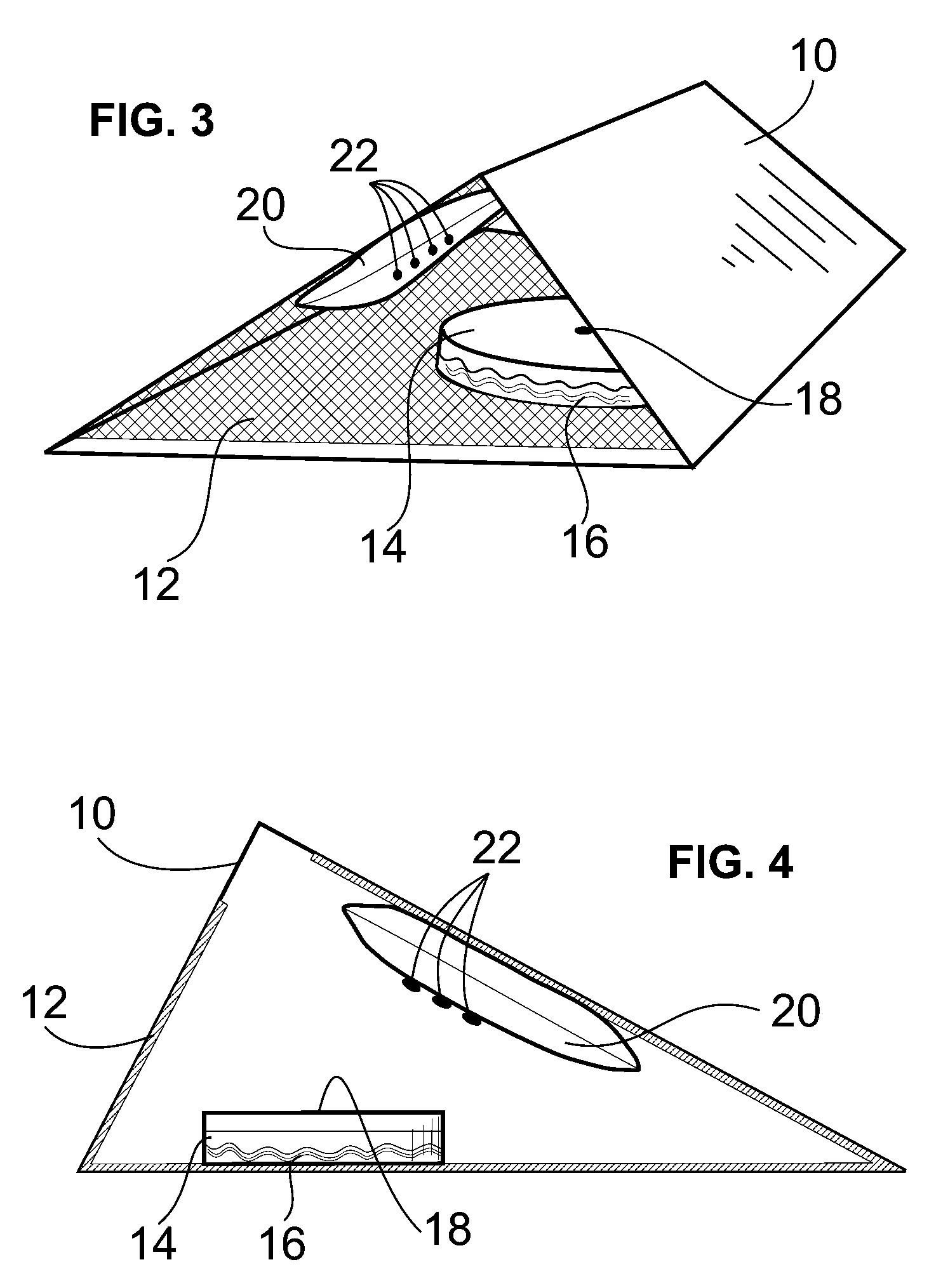Bed bug attractants and methods for trapping bed bugs
- Summary
- Abstract
- Description
- Claims
- Application Information
AI Technical Summary
Benefits of technology
Problems solved by technology
Method used
Image
Examples
example 1
Sustained Release of Low Levels of Carbon Dioxide
[0029]Mixtures of white sugar (sucrose, CAS No. 57-50-1), dried baker's yeast (Saccharomyces cerevisiae), citric acid anhydrous (CAS No. 77-92-9), and warm tap water were combined as specified in Table 1. Fermentation of sugar by yeast into ethanol releases carbon dioxide (CO2) as a by-product, among other gases. Citric acid lowered the initial pH of the solution to approximately pH 3, which slowed fermentation to a controlled rate. Carbon dioxide was presumed to be the main component of released gases.
TABLE 1Combinations for producing very low ratesof carbon dioxide via fermentation.Micro-YeastSugarCitric acidWatercelluloseSkatoleFormula(g)(g)(g)(mL)(g)(mg)CF10.4661.4560.013130.0640.032CF1S0.4661.4560.01313——CF51200150——CF92400.4400——CF101400.4400——CFF2400.4250——
[0030]CO2 production was measured with an apparatus whereby the gas released by fermentation displaced the water in a cylinder. Mixtures were combined in 250 mL Pyrex round m...
example 2
Feasibility of Method and Two Trap Designs
[0033]Preliminary efficacy testing was performed at two locations with known bed bug infestations in the Seattle area. Location 1 was a homeless shelter which had not been treated for bed bugs, despite the severity of the infestation throughout the building. Location 2 was a homeless shelter which had recently been chemically treated for bed bugs.
[0034]Two trap styles were initially tested. The first trap (BT) was a 2-liter version of the trap of Banfield (U.S. Application 2009 / 1026257), which had been modified by gluing a light fabric 2.5 cm wide and 10 cm long from the base of the trap to the side entrance holes of the trap in order to allow bed bugs to ascent the slippery plastic trap walls. Attractant CF5 (Table 1, Example 1) was placed inside the trap to both attract bed bugs and to drown them in the liquid.
[0035]The second trap (FT) was a version of the trap of Vaudry (U.S. Pat. 5,353,542) 30 modified as illustrated in FIG. 2: (a) the ...
example 3
Establishment of Baseline Catches in Un-Baited Sticky Traps
[0039]A third trap style (ST) was tested (SpringStar Inc., Woodinville, Wash,). ST was a simple, adhesive-coated paper 10 12.5 cm wide and 37.5 cm long, folded into a triangle shape such that the inner adhesive layer 12 was protected from dust and debris, but the sides were open to allow insects to enter and be trapped on the adhesive 12, as illustrated in FIG. 3 and FIG. 4. Two traps were placed on the floor, adjacent to the baseboards, approximately a meter apart in all four corners of a small (3 m×6 m) multi-purpose room at Location 1 (Example 1), for a total of 8 traps. Traps were retrieved after 24 hours and new traps were placed. This was repeated twice. An average of 1 bed bug was caught per trap. Another 8 traps were placed as previous and left for 7 days. After 7 days, there was an average of 6.75 bed bugs per trap, or 0.96 bed bugs per trap per day.
[0040]It was concluded that, contrary to published reports, bed bug...
PUM
 Login to View More
Login to View More Abstract
Description
Claims
Application Information
 Login to View More
Login to View More - R&D
- Intellectual Property
- Life Sciences
- Materials
- Tech Scout
- Unparalleled Data Quality
- Higher Quality Content
- 60% Fewer Hallucinations
Browse by: Latest US Patents, China's latest patents, Technical Efficacy Thesaurus, Application Domain, Technology Topic, Popular Technical Reports.
© 2025 PatSnap. All rights reserved.Legal|Privacy policy|Modern Slavery Act Transparency Statement|Sitemap|About US| Contact US: help@patsnap.com



